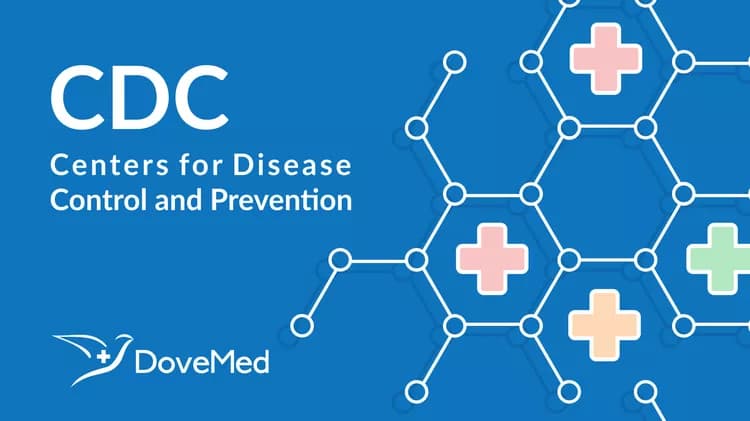
New CDC Study Highlights Burden Of Pneumonia Hospitalizations On U.S. Children
New CDC study highlights burden of pneumonia hospitalizations on U.S. children
Children younger than 5 years of age accounted for 70 percent of pneumonia hospitalizations among children, the Centers for Disease Control and Prevention reported in a study published today. Pneumonia remains a leading cause of hospitalization among children in the United States. The two-and-a-half-year study published in the New England Journal of Medicine by CDC researchers and three U.S. children’s medical centers estimated the burden of community-acquired pneumonia hospitalizations among U.S. children. Researchers also found that respiratory viruses, rather than bacterial pathogens, were most commonly detected in children hospitalized with pneumonia.
“Pneumonia puts thousands of young children in the hospital each year at a cost in the U.S. of about $1 billion, not to mention suffering of kids and hardship for their families,” said CDC Director Tom Frieden, M.D. M.P.H. “This ground-breaking study shows how badly we need faster, less-expensive diagnostic tests for doctors to accurately diagnose the cause of pneumonia so they can effectively treat it.”
“The data gathered from this study add to the evidence base that respiratory virus infections lead to pneumonia hospitalizations and complications in children,” said Dr. Seema Jain, lead author of the paper and a medical epidemiologist in CDC’s Influenza Division. “We hope this provides incentive for the continued and future development of effective treatments and vaccines against pathogens that don’t have such countermeasures available. It also highlights the importance of using existing treatments and vaccines, such as those against pneumococcus and influenza.”
The CDC Etiology of Pneumonia in the Community (EPIC) study sought to address gaps in knowledge about pneumonia in children by providing estimates of the incidence of community-acquired pneumonia hospitalizations in U.S. children. Children in the study were enrolled from January 2010 to June 2012 in three U.S. children’s hospitals in Memphis, Nashville, and Salt Lake City. Study staff tested children using a range of laboratory tests for viral and bacterial respiratory pathogen detection.
During the study period, the EPIC study team enrolled 2,638 children, of which 2,358 (89 percent) had radiographically-confirmed pneumonia. The median age of children in the study was 2 years old. Intensive care was required for 497 (21 percent) of the children, and three children died. Among 2,222 children with radiographic pneumonia and specimens available for both bacterial and viral testing, a pathogen was detected in 1802 (81 percent) children. One or more viruses were detected in 1,472 (66 percent) of these children. Bacteria were detected in 175 (8 percent), and bacterial and viral co-detection occurred in 155 (7 percent).
The study estimated that annual pneumonia incidence was 15.7/10,000 children during the study period. The highest incidence was among children younger than 2 years old (62.2/10,000). Respiratory syncytial virus (RSV) was the most common (28 percent) pathogen detected, and it was associated with the highest incidence among children younger than 2 years old with pneumonia.
Human rhinovirus was detected in 22 percent of cases, but it also was identified in 17 percent of asymptomatic controls who were enrolled, by convenience sample, at the same sites during the same period. This makes it challenging to interpret the meaning of human rhinovirus detection in children hospitalized with pneumonia.
Other detected viral pathogens included:
human metapneumovirus (13 percent),
adenovirus (11 percent), parainfluenza viruses (7 percent),
influenza (7 percent), and
coronaviruses (5 percent).
Bacterial pathogens detected included:
Mycoplasma pneumoniae (8 percent),
Streptococcus pneumoniae (4 percent),
Staphylococcus aureus (1 percent), and
Streptococcus pyogenes (<1 percent).
Several viruses were more commonly detected in children younger than 5 years of age compared with older children. Respiratory syncytial virus (RSV) was found in 37 percent of children with pneumonia younger than 5 years old compared with 8 percent in older children. Likewise, adenovirus was found in 15 percent versus 3 percent and human metapneumovirus was found in 15 percent versus 8 percent of children younger than 5 years old compared with older children. In contrast, Mycoplasma pneumoniae was less commonly detected in children younger than 5 years of age compared with older children (3 percent versus 19 percent).
Although bacteria were less commonly detected, the authors note that the study results reflect the success of widespread bacterial conjugate vaccination in the United States in substantially reducing previously common bacterial infections like pneumococcal and Haemophilus influenzae type B disease. However, currently available bacterial diagnostics have limited sensitivity, particularly in children. In the absence of a recognized, common standard for bacterial pathogen detection in pneumonia, the EPIC study findings, which are based on current state-of-the-art diagnostics, suggest that the incidence of bacterial pneumonia is lower than previously reported.
This study was published in theNew England Journal of Medicine on February 26, 2015, and is available online at http://www.nejm.org/doi/full/10.1056/NEJMoa1405870
CDC has launched a new website that provides an overview of the EPIC study’s scope and purpose and will provide links to all future publications based on EPIC data. It is available at www.cdc.gov/pneumonia/epic/.
###
U.S. DEPARTMENT OF HEALTH AND HUMAN SERVICES
Related Articles
Test Your Knowledge
Asked by users
Related Centers
Related Specialties
Related Physicians
Related Procedures
Related Resources
Join DoveHubs
and connect with fellow professionals

0 Comments
Please log in to post a comment.